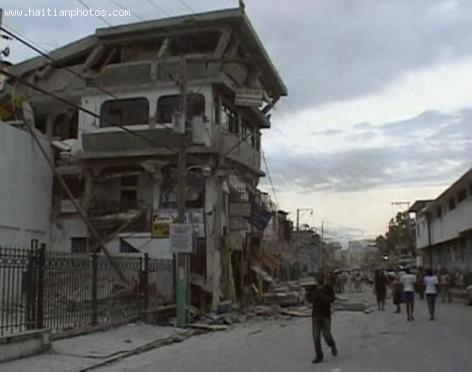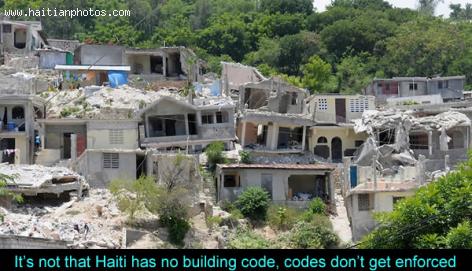ADVERTISEMENT
Safety
National Contingency Plan has no Plan for Tropical Storm or Hurricane
As Hurricane is expected to bear down on Haiti, motivated the island's National Contingency Plan (NCP) to release information of what to expect when the storm landed. NCP offered no preparedness tips, but a litany of alarming predictions: the death rate will soar, rural migrations to urban areas will multiply, and disease will be endemic.
More than half a million nationalists are in danger; a 100,000 increase from 2012's forecast. The government is unable to provide adequate services for the ballooning populations.
Storm Tips - After Storm
Do not venture outdoors until the storm has passed. Many people die after going out during the eye, thinking the storm had ended. A good way to determine that the storm has definitely passed is to verify this by weather updates over the radio. Report any power lines that have been downed and keep well away from them. Because of the damage done to some infrastructures, amenities like electricity and piped water may take some time to resume. Be patient, report any damage to the relevant authorities and continue to use your stored food and water.
Storm Tips - During Storm
During a storm it is safest to keep inside a secure room. Make sure to stay away from the windows and do not use candles or your phone. Keep your supplies of food, water, first aid and any necessary tools nearby and keep abreast of the storm by listening to reports on the regular radio or NOAA radio. During the eye of the storm, remain inside as the calm is only temporary and storm conditions will resume.
Storm Tips - Hurricane Watch or Warning
Safety during a hurricane is a matter of personal responsibility. How ready you are in case of a disaster reflects how well one can weather the storm. During a hurricane watch or after a warning, one should look to abandon all low-lying areas, secure valuables stored outside, stock up on food of the non-perishable variety, water and fuel supply, and batten down windows.
Storm Tips in Haiti - Billboard Danger
Billboards have been our constant companions on the road for as long as advertising has mattered, but after the recent decision made by Reginal Delva, Secretary of State for Public Safety, their presence during the hurricane season will be greatly diminished. Citing the risk posed to the lives of people during a hurricane by falling billboards, Delva has given the demand that billboards be removed temporarily by the companies who own them. These companies are said to have given their agreement, a decision aided by the planned sanctions to be taken against those who do not comply.
Home Building in Haiti - Inadequate Lateral Load Resisting
Weighty concrete ceiling and floor slabs were made for hurricane weather. During an earthquake, the construction of most low-rise buildings meant the walls were dislodged and discharged. The confined masonry system should have worked well under those conditions, but, the frames built in Haiti were mostly inadequately designed and were not integrated enough with beams and columns that were reinforced. As a result, the walls do not have the in-plane load bearing capabilities necessary to withstands strong tremors.
Home Building in Haiti - Code and Code Enforcement
With Haiti being without its own building code, the cue for most builders usually comes from Europe or the U.S. While the Caribbean has its own code, CUBiC, (Caribbean Uniform Building Code), few Haitian engineers employ the standards. Further to that, most buildings were not even built based on designs by an engineer. Permits must be sought for builds, but plan checks and construction inspections are rare and, as such, many buildings are not up to code, making them susceptible to collapse and degradation, especially since they are not diligently maintained.
Home Built on shaky ground in Haiti
A typical house in Haiti starts with a foundation about a meter in depth. For homes and buildings built on an incline, the foundation can rise to as much as 2 meters above the ground. Concrete masonry units, not fired clay bricks, as were prevalent in the 19th century, are used for walls. The unreinforced units are given frame by concrete columns which are reinforced lightly. Slab roofs and floors are common, with one layer of reinforcement for a 4 to 6 inch thickness. These structures are usually single-storied, but are also as tall as two or three stories.









 Who will be the next president of Haiti?
Who will be the next president of Haiti?  François Nicolas Duvalier Potential Candidate for President of...
François Nicolas Duvalier Potential Candidate for President of...  Gas Station In Haiti
Gas Station In Haiti  Jean Henry Céant deposited documents in Parliament for...
Jean Henry Céant deposited documents in Parliament for...  Haiti Street Food, manje kwit or Chin Janbe, for $1 or less
Haiti Street Food, manje kwit or Chin Janbe, for $1 or less  Partial list of privileges enjoyed by Government officials in...
Partial list of privileges enjoyed by Government officials in...  Paul Eugène Magloire, born in Quartier Morin
Paul Eugène Magloire, born in Quartier Morin  Port-au-Prince on fire over gas prices hike
Port-au-Prince on fire over gas prices hike 



